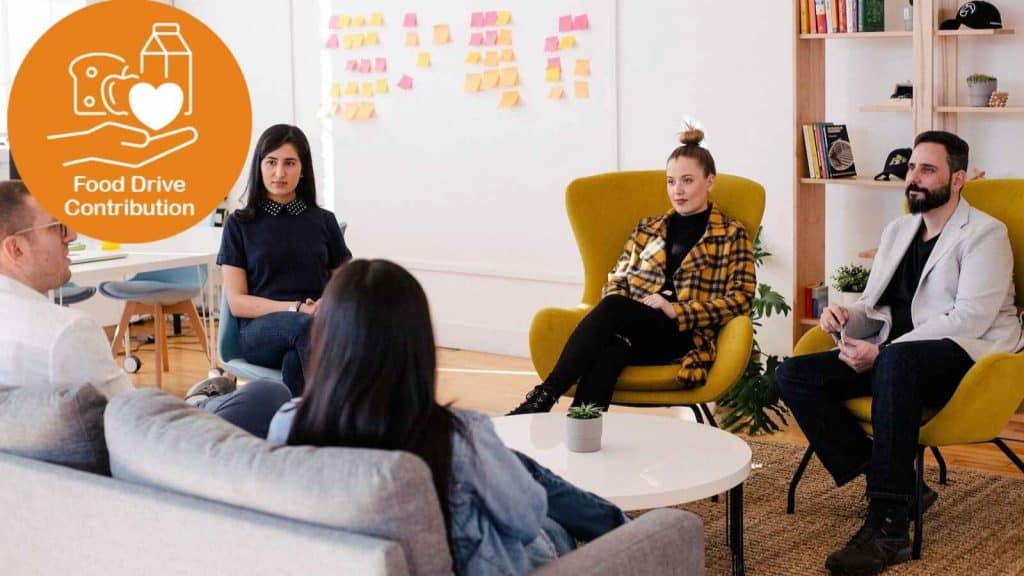IT Chronicles reached out to executives, thought leaders, experts, practitioners, and writers about a unique initiative. ITC would donate to Second Harvest for every article submitted in December by our past contributors. Thank you to all who contribute to this food drive. We appreciate your knowledge and leadership.
Table of Contents
ToggleAn organisation is complex, made up of a tangled web of individual complex beings with unique thought patterns that impact every decision made and every action taken. The body cannot follow where the mind won’t go. If you want to change your business, there’s a need to change the conversations within it.
Hank Rubin describes collaboration as “a purposeful relationship in which all parties strategically choose to cooperate to accomplish a shared outcome.” It’s an enigma, an expectation people willingly and intentionally work together. However, collaboration is doomed without a desire to have the conversations to make it active with the humanness needed in evolving organisations and leaders. Enabling collaboration and conversations that count depends on building trust through relationship and emotional agility. We are part of micro-entanglements consisting of micro-empathetic moments between us. I recently heard, “It’s survival of the friendliest, not survival of the fittest.”
Communication is a dynamic place. People aren’t difficult…just different! This also means their conversations vary greatly from one mindset to the next and are influenced by their role, position and responsibilities within the organisation and something deeper – their values. Empathetic organisations are tuned into the experiences of their people and continuously improve their talent while increasing the meaningful moments that employees crave. Before you can delve deeper and look to change the conversations that are holding the business back, observe and understand the ones that are already happening.
CxOs and those across leadership in all facets have a responsibility to model behaviours and normalise empathetic responses as a strength, not a weakness if we are to transform collaboration, communications, decisions and actions. Through this, a culture of empathy can result in tangible actions. CxOs build bridges to employees to let them know what is a priority in their organisations and ensure it is reflected in their daily work experience. No one wants to feel like they are walking on eggshells in any relationship.
Desire comes from need & passion
What are you liking or not liking about the conversations happening, and how well do they link to your vision, goals, objectives, and most importantly, the culture needed for success?
If a healthy mind largely relies on building healthy, meaningful relationships with those around us, we need to be spending more time connecting with others. Start from where people are, not from where you want them to be. Is the environment surrounding them conducive to free-flowing interaction?
What are the types of conversations you’re trying to build? What kinds of subjects, words, focus are you putting on conversations, and do they contribute to building relationships and moving projects, improvements or problem solving forward? The key is enhancing the ability for people to have their intelligence increase as a consequence of being together. Challenge culture that prizes positivity over emotional truth and tap into the full range of emotions and experiences, including the more difficult ones, yet still choose to act in ways that are concordant with our values. This is true emotional agility.
When we enter the world of wild collaboration and harnessing the knowledge and wisdom that exists, it is about connecting the space/time continuum of the business with the capability distribution of mass and energy across the organisation. The principles I follow in my approach are simple – it’s all about People Connected, Knowledge Shared, Possibilities Discovered, and Potential Realised.
It’s about understanding and working with the relationships that exist through the interactions and expanding them—making the ties that bind us visible and exploring the tangents. Just as work doesn’t get done without focussing on it, the same goes for our conversations. Be mindful of how you are tapping into this part of the individuals and teams around you. The language in the company PR blurbs is not enough; it requires rich context and sharing our narratives so a common meaning can emerge.
Motivate a thoughtful exchange
Not every conversation has the same value. Any conversation takes time and focuses away from other things, so you need to be mindful, for example, if the other person has a pressing task or other engagement on the go. It can be as simple as ,’what are your thoughts on…?’ or ‘have you got 5 minutes to go over a thought I have on xyz / bounce an idea off you?’
An important note, it’s not about filling the silence with noise.
Does the conversation expose you to new information and perspectives?
Are you able to develop the conversation to be more open and dispersed?
What is the density level / depth of your conversation?
Pay attention to how you bridge the gaps within the conversation.
Establish if your conversations are currently focused on immediate concerns or the future. Both are valid but encounter different thought patterns. Is it an expression of feeling or a tangible issue? How personal is the topic? If directly related to the person’s role and performance, even a business subject can be intrusive.
A conversation starts with an idea – a journey point. It may take a meandering path as we begin our exploration and then build concrete steps to move forward. Often ephemeral to start, they can become tangible. Conversations can validate prior success and create an atmosphere for more conversations like that. They give hope, build possibilities to make meaningful relationships.
Create your Story
“Empathic Collaboration creates Conversations creating better Communication creating wider Transparency and deeper Trust.”
Simone Jo Moore
It’s about basic engagement and being authentic and encouraging conversations. Embrace your vulnerability—the willingness to do and say something where there are no guarantees. The results of what you learn may just surprise you.
“Business results through human-centric advantage – this is where experience-minded, and purpose-driven organisations are able to expand minds and capability.”
Simone Jo Moore
Your conversations are an opportunity to develop new collaborations. They become the story of your organisation. When you’re part of a team that is as engaged in the storyline as you are, the magic truly happens. Make your story worth telling!




